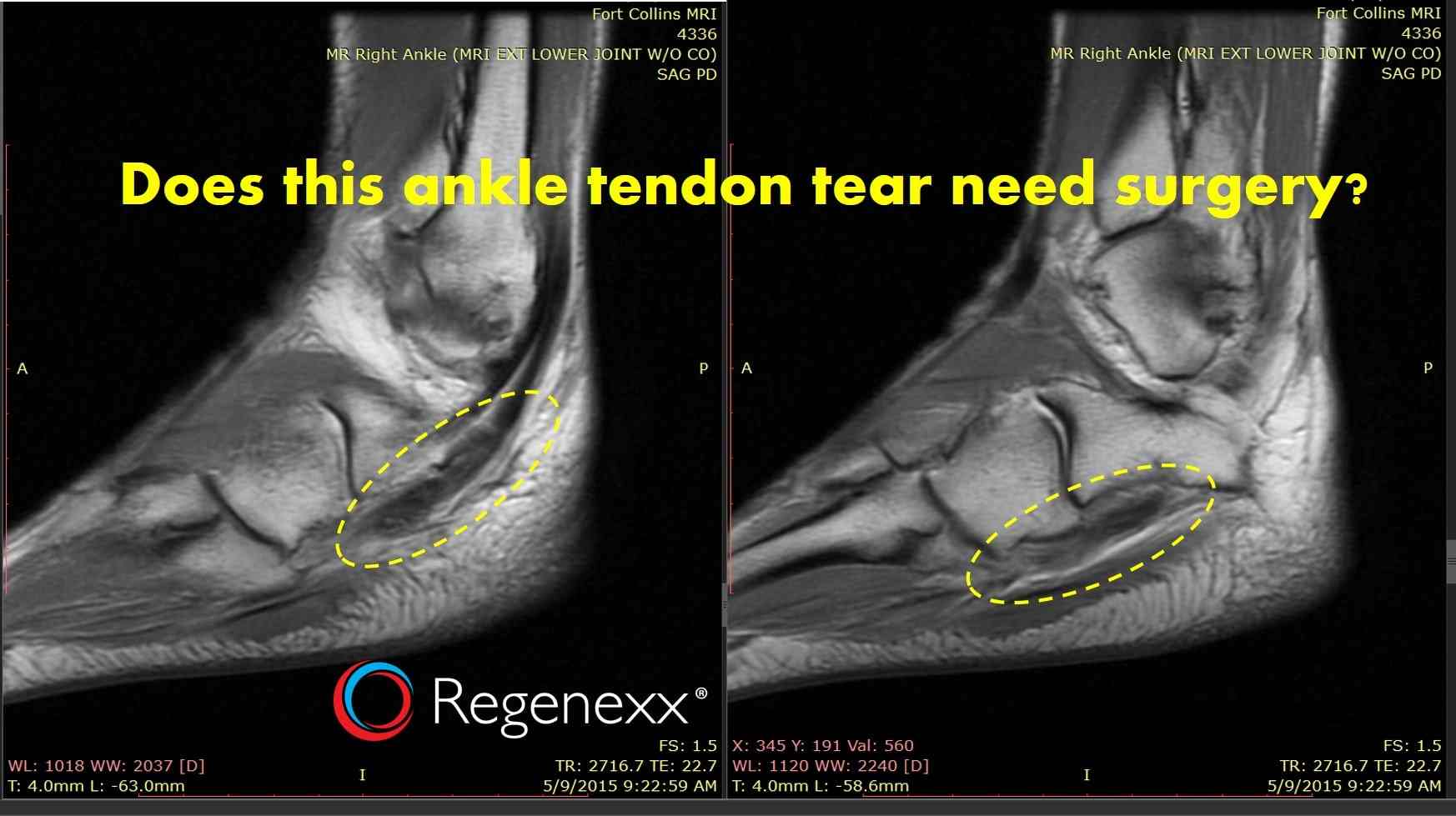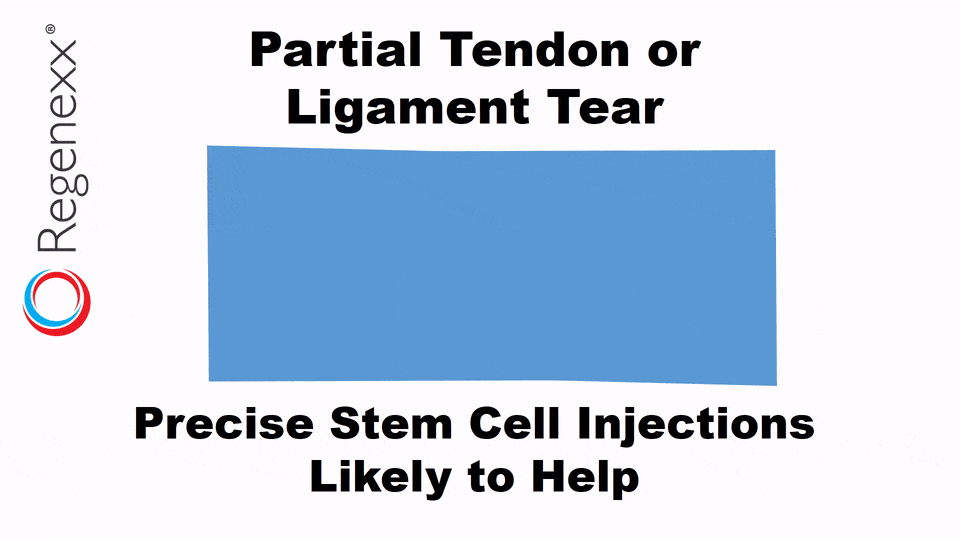How to Heal a Torn Tendon Naturally: The Type of Tear Matters
On this page:
The patient’s MRI above is from clinic yesterday. It’s of an ankle tendon, but it might as well be a shoulder, knee, or hip tendon or ligament. The problem was that this patient believed that she had a “tendon rupture” and that it needed surgery, so she went that direction.
Now things are a mess, and as I looked at the image, it was clear that this ankle tendon tear was of a type that we can usually heal with stem cells. So how to heal a torn tendon naturally? First, you have to understand what sort of torn tendon or ligament you have.
What Is a Tendon or Ligament Made Of?
Dense fibers that all run in the same direction makes up tendons and ligaments, not unlike rope. But as we age, the natural stem cells inside these structures can get worn out leading to wear and tear that accumulates without repair. This degeneration can cause the tendon or ligament to weaken so something like a fall, or a weird move can cause a tear.
What Are the Types of Tendon Tears?
When most patients hear that they have a torn tendon or ligament, they think that the damage is massive and can only be fixed surgically. So how to heal a torn tendon naturally? What if I told you that most tears are nothing of the sort and many can be treated without invasive surgery? Hence understanding which type of tear you have may help avoid an invasive surgical procedure and possible side effects (1).
A partial tear means that only part of the tendon or ligament is torn (see below). These tears usually are helped with a precise imaged guided platelet-rich plasma injection into the damaged area.
When most patients hear they have a “complete” tendon or ligament tear they believe that the structure is torn in half and snapped back like a rubber band. However, most of the time this doesn’t happen. In fact, this type of tear is called a complete non-retracted tear (shown below).
This means that the tendon or ligament has injured fibers that go entirely through the “rope,” but that some fibers remain intact. In this case, that the structure is still holding together. Based on our experience, this type of damage can usually be helped with a precise high dose stem cell injection.
Finally, there’s the kind of tear that is what most patients believe has happened; the type where both ends pull apart like a rubber band. This damage is called a complete retracted tear which is best repaired with surgery.
My Ankle Patient’s Story
My patient is a woman with left knee arthritis successfully treated in 2013. Last year she fell at home and injured her foot and ankle. Her MRI above showed that one of the outside tendons (peroneus longus) that should be dark and dense was more blown out and lighter in appearance (see the yellow dashed circles). Based on this MRI alone and continued pain, she was told she needed surgery for a complete tendon tear that she visualized as a snapped rubber band.
However, the MRI shows a complete tendon tear that isn’t retracted. As above, she has the middle type non-retracted tear that likely would have responded well to an ultra-precise, image guided stem cell injection using our high dose procedure. However, it’s now more than a year out from the surgery, and she’s still miserable with all the same pain as before.
Also, the ultrasound that I performed yesterday shows a tendon that’s hypertrophied (enlarged 2-3 times its normal size) and heavily scarred from the surgery. So at this late date we’ll begin treating this tendon, and hopefully, we can help.
The upshot? If you want to know how to heal a torn tendon naturally then make sure you know what type of tendon or ligament tear you have! As discussed, most patients don’t have the snapped back like a rubber band kind that needs surgery, but in fact lesser tendon issues that can usually be helped to heal through a precise injection!
__________________________________________________
References
(1) Wu F, Nerlich M, Docheva D. Tendon injuries: Basic science and new repair proposals. EFORT Open Rev. 2017;2(7):332-342. Published 2017 Jul 27. doi:10.1302/2058-5241.2.160075

If you have questions or comments about this blog post, please email us at [email protected]
NOTE: This blog post provides general information to help the reader better understand regenerative medicine, musculoskeletal health, and related subjects. All content provided in this blog, website, or any linked materials, including text, graphics, images, patient profiles, outcomes, and information, are not intended and should not be considered or used as a substitute for medical advice, diagnosis, or treatment. Please always consult with a professional and certified healthcare provider to discuss if a treatment is right for you.




